This article was medically reviewed by Erik Kramer, DO, MPH. Dr. Erik Kramer is a Board-Certified Primary Care Physician at the University of Colorado. With over 15 years of experience, his clinical interests include obesity and weight management, diabetes care, and preventive care, as well as embracing a holistic approach to primary care. He received his Doctorate in Osteopathic Medicine (D.O.) from the Touro University Nevada College of Osteopathic Medicine and completed his residency at Central Maine Medical Center. Dr. Kramer is a Diplomate of the American Board of Obesity Medicine.
There are 11 references cited in this article, which can be found at the bottom of the page.
This article has been viewed 120,836 times.
Constipation is a potential side effect of any low-carb diet, particularly during the early stages of the regimen, while you’re learning how to get more fiber. Constipation can make your stool dry and difficult to pass. You may have trouble getting enough fiber at first, if bread, crackers, chips, and other high carbohydrate snacks had been your main source of fiber. In addition, you need to make sure you are getting plenty of water and essential fats/oils. Taking certain supplements and eating fiber rich, low-carb foods including green vegetables will help you to combat constipation while you are on the Atkins Diet.
Steps
Fiber
-
1Get most of your fiber from non-starchy vegetables. The Atkins Diet limits fruits, starchy vegetables (like potatoes and carrots), plus grains and flour. However, you can eat non-starchy vegetables, such as salad greens, as long as you still count your carbohydrates. In fact, in the first phase, most of your carbohydrates should come from non-starchy vegetables. Aim to get up to 20 grams of net carbohydrates a day from veggies. Vegetables are one of the best ways to get fiber into your diet.
- Try to construct half of your plate with non-starchy vegetables.
- Some non-starchy vegetables you can eat include French-style green beans, lettuce and other greens, celery, mushrooms, radishes, asparagus, kale, broccoli, and cauliflower.
-
2Add a little wheat bran to your food. Another good source of fiber, you can use this supplement by sprinkling it on the top of salads or blending it into low-carb smoothies—or into whatever dish you're eating.[1]
- Alternatively, top off your salads and snacks with flax seeds.[2] You can also mix ground flax seeds into a variety of foods, such as yogurt, broth, or ground beef.
Advertisement -
3Keep track of how much fiber you’re getting. Aim to get at least 25 grams of fiber a day if you're an adult woman and 36 if you're an adult man (ages 19-50). Read nutritional labels on products to see how much fiber is in each serving.[3] Use a journal or an app, such as the Atkins Mobile App, to track your fiber intake.[4]
- A single serving of most vegetables is about 2-4 grams of fiber. For example, a cup of spinach, swiss chard, or kale is also 4 grams.[5]
- You can also get fiber from eating small amounts of almonds, walnuts, oat bran, and rice bran.
Hydration
-
1Drink at least 8 glasses of water a day. The Atkins Diet recommends drinking at least 8 glasses of water a day to help maintain a regular regimen. Water helps with constipation by keeping stools looser.[6]
- The Institute of Medicine recommends that men drink at least 13 cups (3,100 mL) of water a day, while women should drink at least 9 cups (2,100 mL).[7]
-
2Don't drink too much caffeine. You can count caffeinated beverages such as coffee, tea, and diet soda as part of your water intake.[8] However, too much caffeine can make you crave sugar, which is off-limits on the Atkins Diet, so limit your intake of caffeinated beverages.[9]
- If you’re a big fan of coffee or tea, try lower-caffeine alternatives so you can still get the flavor you love. For example, go for decaf or half-caf coffee or tea, or drink an herbal tea.
-
3Eat juicy vegetables to boost your water intake. For instance, fresh cucumbers are high in water, so they can help keep you hydrated.[10] They're also non-starchy, so they're approved for the Atkins Diet.
- Other juicy, low-starch vegetables include spinach, celery, lettuce, and zucchini.
-
4Flavor your water with fruit or veggie slices to make it more interesting. The Atkins Diet requires that you skip most fruits (lemon or lime is okay) and eliminate starchy vegetables, especially for the first few weeks, until you begin to maintain your weight.[11] However, you can add certain non-starchy vegetables to water add interest and to flavor it, such as slices of cucumber, a few fresh strawberry slices.
- You can also use flavor packets sweetened with small amounts of a sugar substitute, such as sucralose (Splenda), stevia, aspartame (NutraSweet), or saccharine (Sweet-n-Low). However, you do need to count these packets as a gram of carbohydrates because of the fillers in these types of sweeteners.[12]
Other Methods
-
1Exercise regularly to promote better digestion. Getting enough exercise can help move things along in your digestive tract. Try to exercise a little bit every day, 20 to 30 minutes at least.[13]
- In total, aim for 150 minutes of exercise every week, including some strength exercises like lifting weights or abdominal exercises.[14]
-
2Improve your digestive health with probiotics. Try taking a probiotic in special capsules that dissolve in the intestines. Avoid ones that digest in the stomach, which could disrupt active beneficial bacteria. Studies have shown that probiotics can help decrease constipation.[15] Taking such a supplement can decrease how long it takes for food to go through your system. It also softens stools and may increase the number of times you go to the bathroom per day to 2 or more. Decrease your supplements if it is too often or inconvenient.
- Look for the probiotic supplements containing L-plantarum (Lactobacillus-plantarum). It helps to maintain intestinal health along with a variety of other benefits, including reduced blood pressure and better immune function.[16]
- Bifidobacterium supplements may also help.
- Ask your doctor before starting any supplement. In addition, they can help you determine how often you should take a supplement.
-
3Mix psyllium fiber into your water for a laxative effect. Psyllium fiber is made from the husks surrounding the psyllium seeds. It is soluble in water. Mix a tablespoon or so (about 5 grams) into a glass of water and drink the mixture. You can drink this solution once a day.[17]
- Be sure to get the ground kind so that it dissolves easily. You should be able to find this supplement at health food stores.
-
4Use laxatives to relieve occasional constipation. If you only have constipation once in a while, you can take laxatives from time to time to help yourself go to the bathroom on those few occasions. You have your choice of several over-the-counter laxatives to help with your situation.[18]
- One option is to use a stool softener. These loosen up your feces by drawing more water into them. In turn, the looser feces make it easier for you to go to the bathroom. A couple of examples of this type of laxative are MiraLax, Colace, and Surfak. These usually take 6 to 8 hours to work.
- Another type of laxative is a lubricant. Mineral oil is an example of this type. Lubricants are just what they sound like—they coat your colon and enable feces to pass more easily.
- You can also use milk of magnesia and lactulose, which are designed to help you pass feces by increasing liquid/moisture in your colon.
Expert Q&A
-
QuestionIs it normal to have low energy during my first week of the Atkins diet?
 Chris M. Matsko, MDDr. Chris M. Matsko is a retired physician based in Pittsburgh, Pennsylvania. With over 25 years of medical research experience, Dr. Matsko was awarded the Pittsburgh Cornell University Leadership Award for Excellence. He holds a BS in Nutritional Science from Cornell University and an MD from the Temple University School of Medicine in 2007. Dr. Matsko earned a Research Writing Certification from the American Medical Writers Association (AMWA) in 2016 and a Medical Writing & Editing Certification from the University of Chicago in 2017.
Chris M. Matsko, MDDr. Chris M. Matsko is a retired physician based in Pittsburgh, Pennsylvania. With over 25 years of medical research experience, Dr. Matsko was awarded the Pittsburgh Cornell University Leadership Award for Excellence. He holds a BS in Nutritional Science from Cornell University and an MD from the Temple University School of Medicine in 2007. Dr. Matsko earned a Research Writing Certification from the American Medical Writers Association (AMWA) in 2016 and a Medical Writing & Editing Certification from the University of Chicago in 2017.
Family Medicine Physician It will take your body some time to adjust to the new diet. You should give it about a week or two before you become concerned about any change in energy levels.
It will take your body some time to adjust to the new diet. You should give it about a week or two before you become concerned about any change in energy levels. -
QuestionHow many fiber supplements can I have on the Atkins diet?
 Chris M. Matsko, MDDr. Chris M. Matsko is a retired physician based in Pittsburgh, Pennsylvania. With over 25 years of medical research experience, Dr. Matsko was awarded the Pittsburgh Cornell University Leadership Award for Excellence. He holds a BS in Nutritional Science from Cornell University and an MD from the Temple University School of Medicine in 2007. Dr. Matsko earned a Research Writing Certification from the American Medical Writers Association (AMWA) in 2016 and a Medical Writing & Editing Certification from the University of Chicago in 2017.
Chris M. Matsko, MDDr. Chris M. Matsko is a retired physician based in Pittsburgh, Pennsylvania. With over 25 years of medical research experience, Dr. Matsko was awarded the Pittsburgh Cornell University Leadership Award for Excellence. He holds a BS in Nutritional Science from Cornell University and an MD from the Temple University School of Medicine in 2007. Dr. Matsko earned a Research Writing Certification from the American Medical Writers Association (AMWA) in 2016 and a Medical Writing & Editing Certification from the University of Chicago in 2017.
Family Medicine Physician There is no upper limit on the amount of fiber that one can ingest. I would recommend following the instructions on the fiber supplements. Try to consume between 25 and 38 grams per day of fiber for women and men, respectively.
There is no upper limit on the amount of fiber that one can ingest. I would recommend following the instructions on the fiber supplements. Try to consume between 25 and 38 grams per day of fiber for women and men, respectively.
Warnings
- While occasional constipation for 1-2 days is not a problem, talk to your doctor if you are having constipation repeatedly or have been constipated for more than 3 or 4 days.⧼thumbs_response⧽
- If you have persistent constipation you may need a better laxative, or medical treatment for the problem. You might try glycerin suppositories, which are available over the counter. These generally produce a bowel movement in 15 minutes to 1 hour. If you accidentally take one of these by mouth, contact your Poison Control Center immediately.[20]⧼thumbs_response⧽
References
- ↑ http://www.atkins.com/how-it-works/library/articles/the-rules-of-induction
- ↑ https://www.atkins.com/how-it-works/atkins-blogs/colette-heimowitz/5-ways-to-get-more-fiber-on-low-carb
- ↑ http://nationalacademies.org/hmd/~/media/Files/Activity%20Files/Nutrition/DRIs/DRI_Macronutrients.pdf
- ↑ https://www.atkins.com/how-it-works/atkins-blogs/colette-heimowitz/5-ways-to-get-more-fiber-on-low-carb
- ↑ https://www.med.umich.edu/mott/pdf/mott-fiber-chart.pdf
- ↑ http://www.atkins.com/how-it-works/library/articles/the-rules-of-induction
- ↑ http://www.mayoclinic.org/healthy-lifestyle/nutrition-and-healthy-eating/in-depth/water/art-20044256
- ↑ http://www.mayoclinic.org/healthy-lifestyle/nutrition-and-healthy-eating/in-depth/water/art-20044256?pg=2
- ↑ http://www.atkins.com/how-it-works/library/articles/the-rules-of-induction
- ↑ http://www.mayoclinic.org/healthy-lifestyle/nutrition-and-healthy-eating/in-depth/water/art-20044256?pg=2
- ↑ http://www.atkins.com/how-it-works/library/articles/the-rules-of-induction
- ↑ http://www.atkins.com/how-it-works/library/articles/the-rules-of-induction
- ↑ http://www.mayoclinic.org/diseases-conditions/constipation/basics/treatment/con-20032773
- ↑ https://health.gov/sites/default/files/2019-09/Physical_Activity_Guidelines_2nd_edition.pdf
- ↑ http://www.health.harvard.edu/blog/probiotics-may-ease-constipation-201408217377
- ↑ https://www.ncbi.nlm.nih.gov/pmc/articles/PMC4705246/
- ↑ http://www.atkins.com/how-it-works/library/articles/the-rules-of-induction
- ↑ http://www.mayoclinic.org/diseases-conditions/constipation/basics/treatment/con-20032773
- ↑ https://dailymed.nlm.nih.gov/dailymed/drugInfo.cfm?setid=e52cc711-3134-4f25-8963-e6000aa97875
- ↑ https://dailymed.nlm.nih.gov/dailymed/drugInfo.cfm?setid=e52cc711-3134-4f25-8963-e6000aa97875



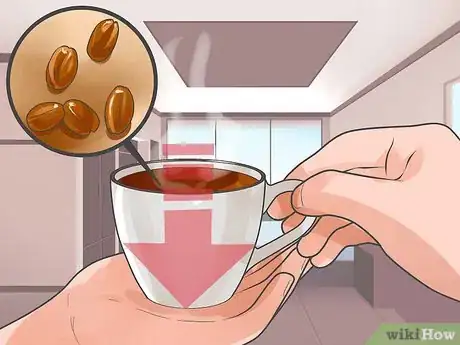




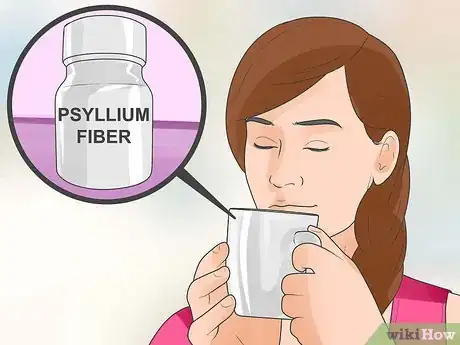
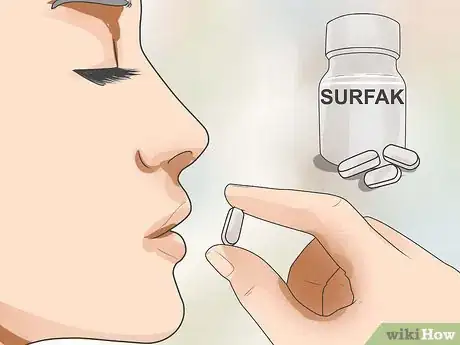


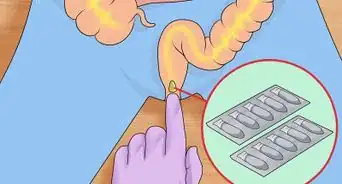
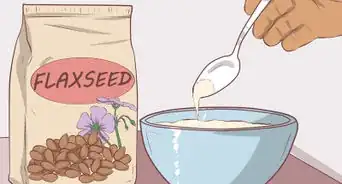

















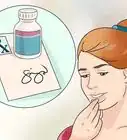
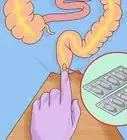
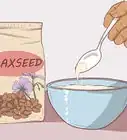



































Medical Disclaimer
The content of this article is not intended to be a substitute for professional medical advice, examination, diagnosis, or treatment. You should always contact your doctor or other qualified healthcare professional before starting, changing, or stopping any kind of health treatment.
Read More...